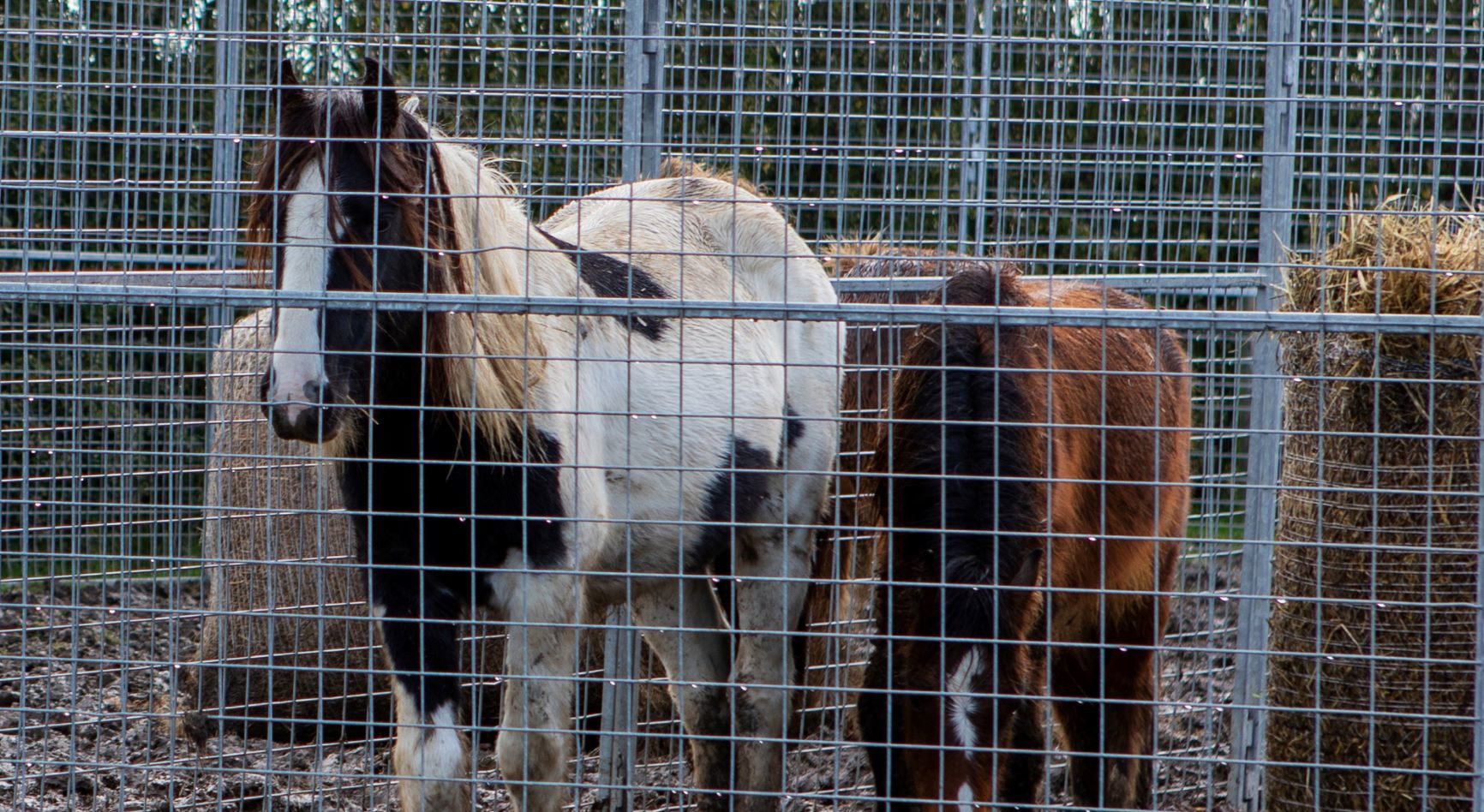70 horses rescued on one site

In recent years Together for Animals member World Horse Welfare has seen more and more large welfare cases coming through, which the charity simply could not deal with alone.
However, working alongside sister welfare organisations and other equine professionals enables the charity to tackle large cases as safely and efficiently as possible.
A call to World Horse Welfare’s welfare line last year from a member of the public concerned about a large group of horses led to Field Officer Chris Shaw visiting the site and discovering that the owner was struggling to cope. The number of horses had escalated to such an extent that the owner wasn’t quite sure how many there were, with the herd spread over several large fields.
The charity always tries to work with owners to resolve a situation wherever possible and in this case Chris found that the owner was keen to improve the conditions for her horses. She admitted that she was struggling to provide the necessary care for them all as the number had got out of hand and sensibly asked for help.
In a great example of how effectively charities and other equine professionals can help horses together, arrangements were swiftly made with Redwings, Bransby Horses, the British Horse Society (BHS) and Cambridge Veterinary School to tackle the situation.
A large-scale operation took place over a number of days, with each horse being caught, examined and treated by the vets as necessary. Farriery and dental care were provided at the same time, with the horses microchipped and then passported by the BHS.
Over 70 horses were helped, with all colts and stallions gelded as part of the process to prevent the numbers increasing any further. The owner paid for the passporting and castrations and agreed to find new homes for most of the horses afterwards, keeping only a small proportion of the herd.
Chris said: “We would always rather work with the owners in situations like this and it was really brilliant seeing the owner of these horses getting stuck in and helping us as we dealt with them. The family started with far fewer horses, but none were castrated and so the herd kept getting larger and larger, eventually resulting in the owners becoming overwhelmed.
“In this case, the owner learned so much about what’s needed to look after and manage her horses properly and, having had her eyes opened to the problems, was genuinely keen to make it right. All the charities involved would always prefer to work with the owners to improve conditions for their horses rather than removing the animals – that’s always a last resort.”
A small number of horses with more serious welfare concerns which required ongoing hands-on expert care were signed over and removed for treatment, with an aim to rehabilitate them and find them new homes.


